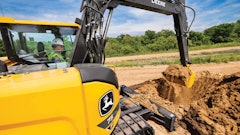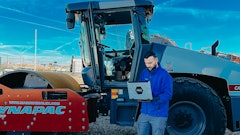
The National Safety Council partnered with the NCCCO Foundation to put out a report covering the safety issues in the crane industry. This report lays out some of the biggest safety risks, ways employers can help educate workers to prevent injuries, and different technology suggestions that could be used to improve safety.
According to the press release:
While cranes play a vital role in the transportation, construction, and agriculture industries, among others, operating this type of equipment can be especially dangerous if proper protocol is not followed. In fact, the Census of Fatal Occupational Injuries (CFOI), reported 297 crane-related deaths between 2011 and 2017. As part of a collaboration with the NCCCO Foundation and continuing its mission to advance safety in the workplace, the National Safety Council released a new report through its Work to Zero initiative Understanding the Current State of Safety Hazards in the Crane Industry, highlighting lift-specific risks and best practices employers can adopt to keep workers safe.
Research from the CFOI also shows more than half of workplace deaths that occur in the crane industry involve workers being struck by objects or equipment, and an additional 27% of fatalities occur as a result of falls and transportation incidents.
"The crane industry can be dangerous and more must be done to protect workers in this industry," said Katherine Mendoza, senior director of workplace programs at NSC. "That's why we have teamed up with the NCCCO Foundation to better understand the main causes of injuries in this field and explore the role that technology can play to eliminate these risks. By understanding these risks and the current state of innovation in the crane industry, we can now explore how to help the industry adopt safety technology and how innovation combined with training and educational resources can make a significant difference in preventing injuries before they occur."
For the report, the National Safety Council partnered with the NCCCO Foundation to survey certified crane operators and inspectors to identify the most common hazards in the industry, the top risk factors, and learn about technology solutions to eliminate or minimize injuries. Nearly 2,200 voluntary and anonymous responses from the NCCCO Foundation between July and August 2023 were used to develop this report. Notable findings include:
Top Hazardous Situations
- Working at height
- Vehicle-pedestrian interactions
- Loading and unloading materials
These are the top hazardous situations on the job. Between 55% and 89% of participants said they were likely or very likely to be exposed to these circumstances. In 2020, NSC found these three hazardous situations resulted in 30% of non-roadway occupational fatalities.
Most Common Risks
- Heat stress
- Fatigue
Heat stress and fatigue are the two most common systemic risks contributing to workplace injuries in the crane industry. The report also found that survey participants reported heat and stress were some of the most likely exposures on the job.
Most Common Causes of Injuries
- Falls from height
- Being struck by a falling object
Situational risks remain prevalent in the crane industry, with falls from height and being struck by a falling object being the two most common causes of injuries.
Safety Training and Compliance
- Eight out of 10 survey respondents believe they have access to appropriate safety training before starting a task. However, lack of proper training still accounted for 7% of personal injuries and 8% of on-site injuries.
Technology Implementation
- The use of safety technology – including drones, proximity sensors, and vital sign wearables – is fairly low. Depending on the specific type, only one to 13% of participants reported using technology at job sites. However, many of those surveyed indicated a willingness to try new safety technology solutions, while the primary barrier to adoption was concern over data privacy.
The report also notes some recommended actions and potential technology solutions that employers can implement to help reduce the top safety risks in the crane industry, including:
Heat Stress
- Working in high-heat environments can lead to both serious injuries and illnesses, including heat stroke, slips, falls, and dropping objects. It's important that employers develop heat stress prevention programs that include safety training on how to recognize the signs and symptoms. Potential technology solutions that may help mitigate these risks include wearables that monitor people's vital signs.
Fatigue
- Fatigue can cause workers to have trouble focusing and remembering, which can lead to distractions and less muscle coordination, ultimately resulting in more injuries. Similar to heat stress, safety training should focus on how to recognize the signs and symptoms. Wearable technology can play an important role in monitoring this issue as well.
Struck by Falling Objects and Falls From Height
- Working at height risks, like being struck by an object or falling, can be reduced with fall protection training and instruction on how to properly use personal fall arrest systems. Potential technology solutions include utilizing drones for inspection and visualization purposes, which eliminate the need for a worker to be off the ground.
This report builds on the Work to Zero Safety Innovation Journey to help organizations assess risks, identify technology solutions, and get workplaces ready for implementation. As the crane industry continues to navigate major safety challenges, NSC and the NCCCO Foundation plan to continue this work and provide additional resources to educate crane operators, inspectors, and employers about potential workplace hazards and technology solutions that can help minimize risks.


























